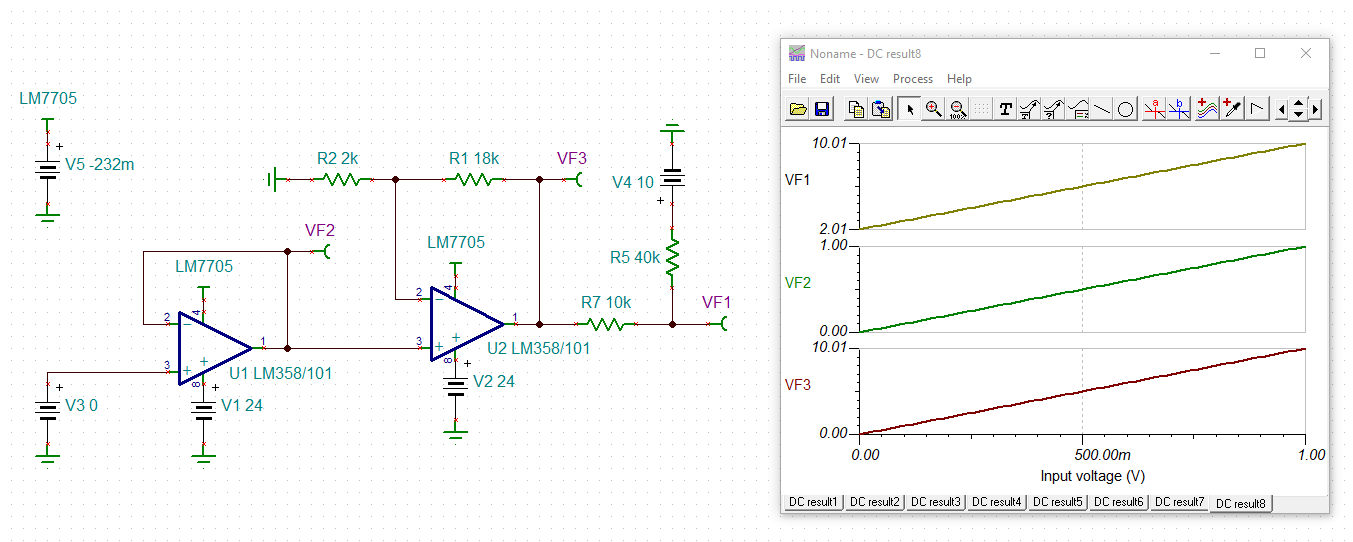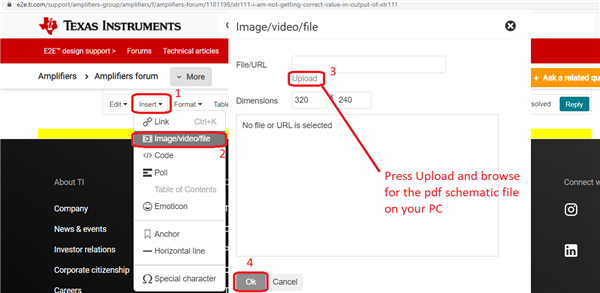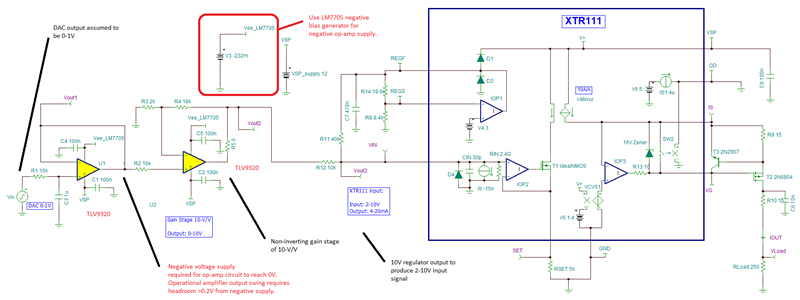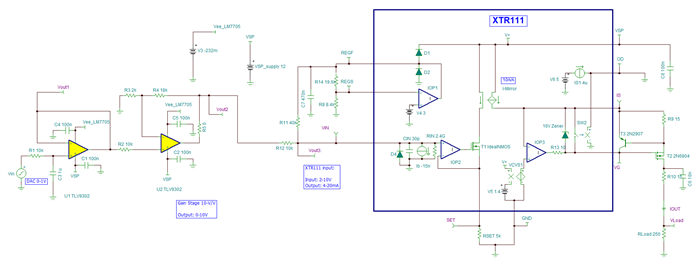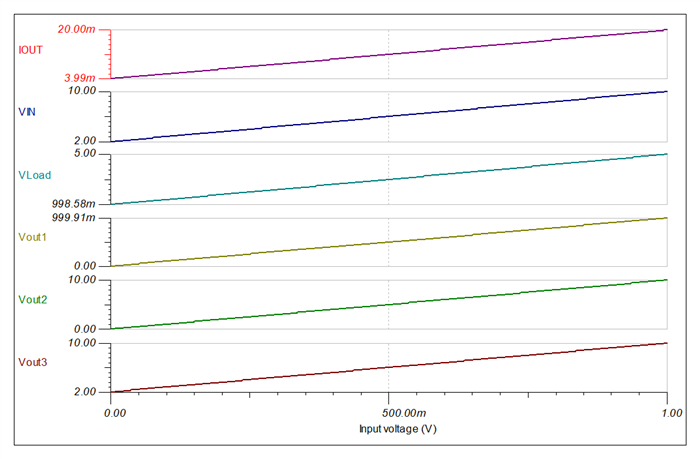Other Parts Discussed in Thread: LM358, TLV2170, TLV9302, OPA2170, LM7705, TINA-TI
hello. I've been trying to get 4-20ma output with xtr111 for a while. I'm applying the output of lm358, which has a gain of 10, giving 0-10v output, to the input of xtr111 with a serial 10k resistor. However, When we apply 0v to the lm358 input, I measure 0.65v at the opamp output. Naturally, the output of xtr111 is greater than 4ma. Please help me to fix the problem.




